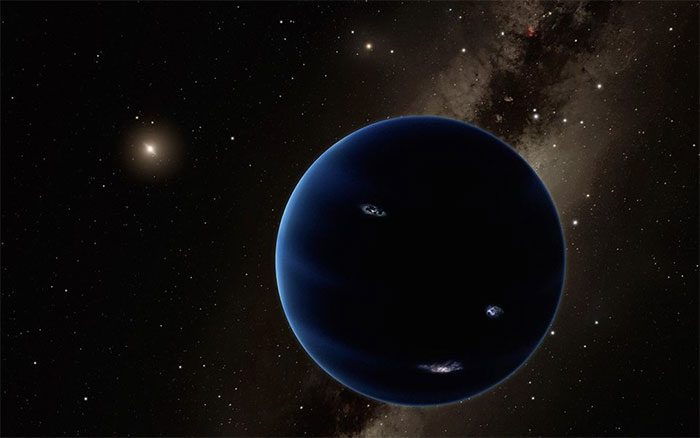New research from France and the USA reveals that the cold and mysterious Oort Cloud at the edge of the Solar System is hiding an unknown exoplanet.
Scientists from the University of Bordeaux (France), Rice University, and Oklahoma State University (USA) have created a model that simulates the evolution of the Solar System from its early days, based on data collected by spacecraft and space agencies around the world.
They discovered that one or more planet-sized objects may have been captured by the mysterious structure known as the Oort Cloud.

Graphic depicting the “ninth planet” hiding somewhere at the edge of the Solar System – (Image: NASA).
Oort Cloud is not a cloud in the literal sense, but a massive collection of icy bodies that extends into space at distances ranging from hundreds to thousands of billions of miles from the Sun.
About 4.5 billion years ago, when the Solar System was newly formed, gravitational forces sent debris from rapidly cooling protoplanetary dust clouds flying away, much like hitting a billiard ball to send it across the table.
Some of these fragments have the potential to become true planets. Some may have found a new “home,” meaning they accidentally collided with another star system and were retained.
According to Live Science, this is not just a hypothesis, as such “disowned planets” have been recorded through observations in distant star systems.
There are two scenarios for how the Oort Cloud could harbor one or more hidden planets.
- First scenario: The Oort Cloud managed to retain some protoplanet that was ejected by the Solar System itself. The probability of this scenario is 0.5%.
- Second scenario: A planet formed from the protoplanetary debris of another star system accidentally passed through and was captured by the Oort Cloud, with a probability of up to 7%.
However, this ninth planet will not be the Planet X that some groups of scientists are searching for, which is a mysterious object that seems to be influencing the orbits of Neptune and other debris around it.
The mysterious planet, or planets, within the Oort Cloud would be too far to affect Neptune, and would pose significant challenges for direct observation.


















































